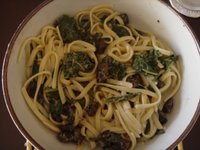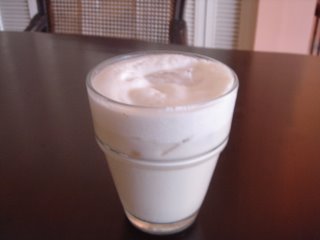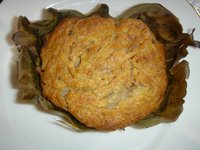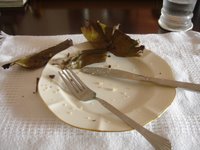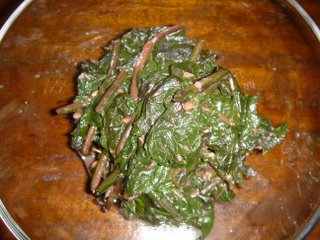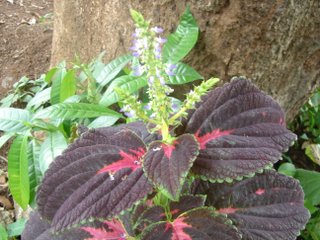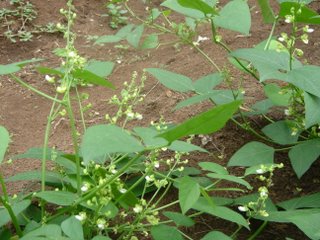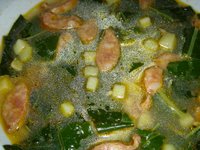
I watched an episode of Martha Stewart's Living last night and one of her guests was Julie Powell author of
Julie & Julia. Julie's book chronicles her experiences while cooking every recipe in Louisette Berthole, Simone Beck and Julia Child's classic book
Mastering the Art of French Cuisine. Quite a feat and written with humor and wit. Her project was actually first chronicled on her food blog
The Julie/Julia Project which she started in August 2002. On the show she cooked a mouthwatering Beef Bourginogne that made me want to go straight to the grocery for ingredients. Only I couldn't because it was late at night. Why can't we have a 24-hour grocery??
Julia Child brought the art of cooking and eating to the American household. Her enthusiasm and dedication to good food has made her an American icon and she is known to every cook worth his salt. On the show, Martha revealed that she too had cooked every recipe on the book and that is how she learned to cook well. I would think anyone who wants to learn how to be a chef would learn by doing what Julie and Martha did in place of going to culinary school.
I own a 1964 edition of Mastering the Art of French Cuisine which belonged to my great-grandmother whom I was named after. My great-grandmother is a cooking legend in my clan and this book was one of two books that she owned (the other was The Joy of Cooking). In her memory and for the benefit of anyone in her family who want to recreate the food, cakes, pastries and preserves she served in her summer house in Baguio or her home in San Rafael, Manila my Aunt recopied all her personal recipes and distributed them to all the family members. The only problem is that most of the recipes have no measurements. She died after her third great-grandchild was born. Me being her first great-grandchild. My favorites were esaymadas, guava paste, strawberry jam, mango jam and food for the gods. I remember summers in Bagiuo when I was very young and she would be doing cross-stich in her living room and I would sneak into the pantry and finish all the guava paste. Her ensaymadas would melt in your mouth. When I tried to make it years later, I realized why it was so delicate and melty, it had tons of butter incorporated with flour, much like a puff pastry except it was moist, cheesy and light at the same time. Incredible!

In memory of these two great women whose culinary skills have had a profound influence on me and to Julie who is destined for cooking greatness I will cook the book's recipe for Fish Quenelles in Normandy Sauce Gratinee. Now, I'm off to the grocery.

Julia Child's kitchen, the wall used to hang her pots and pans was built for her by her husband 40 years ago. Go
here to see more of her kitchen which is on display at the Smithsonian.
